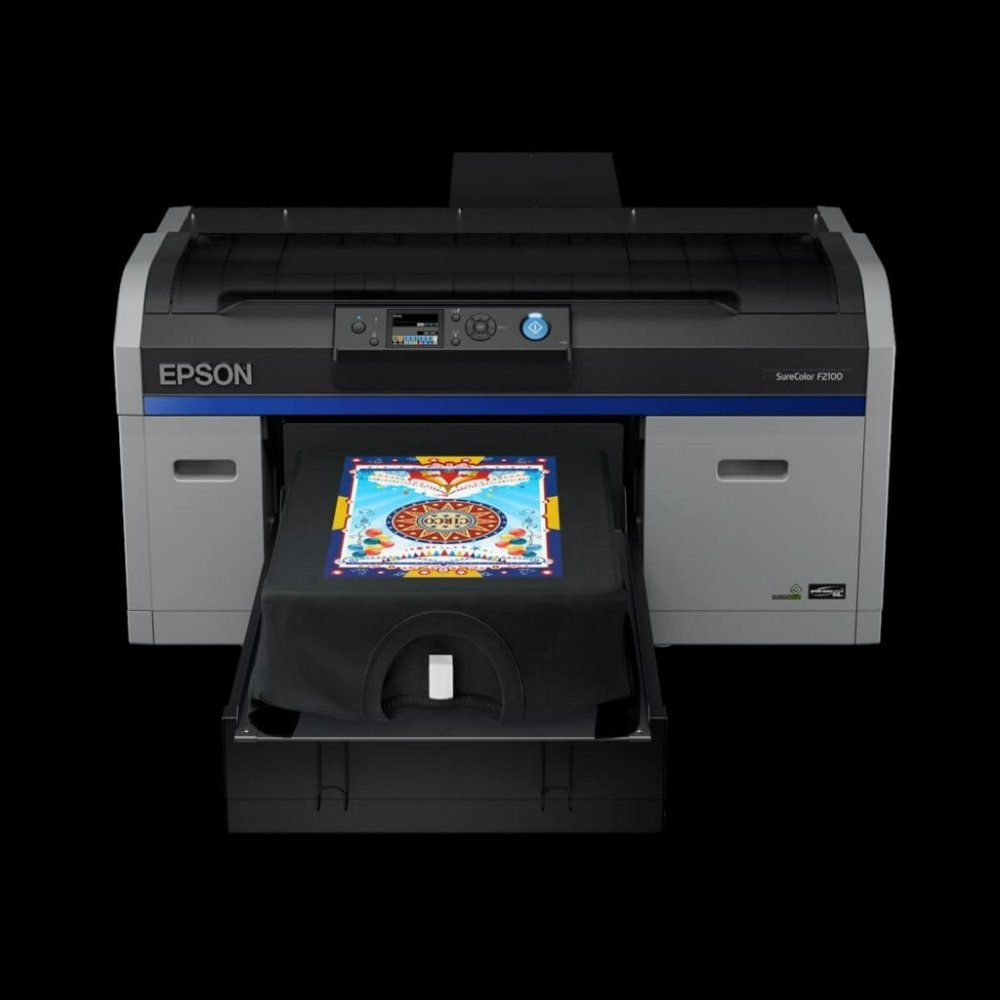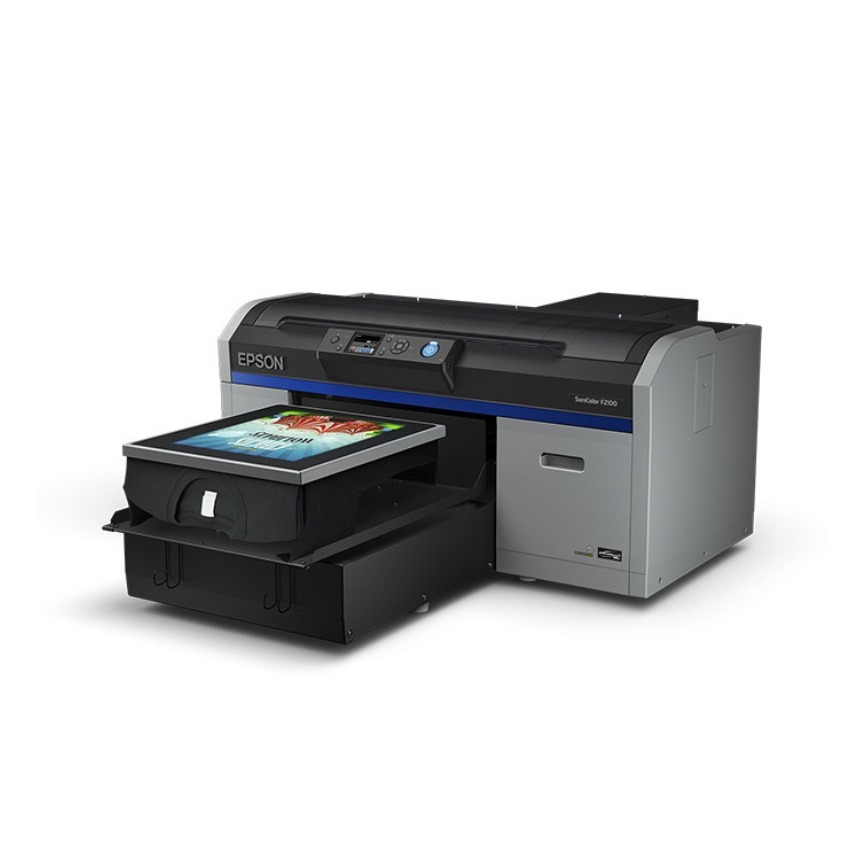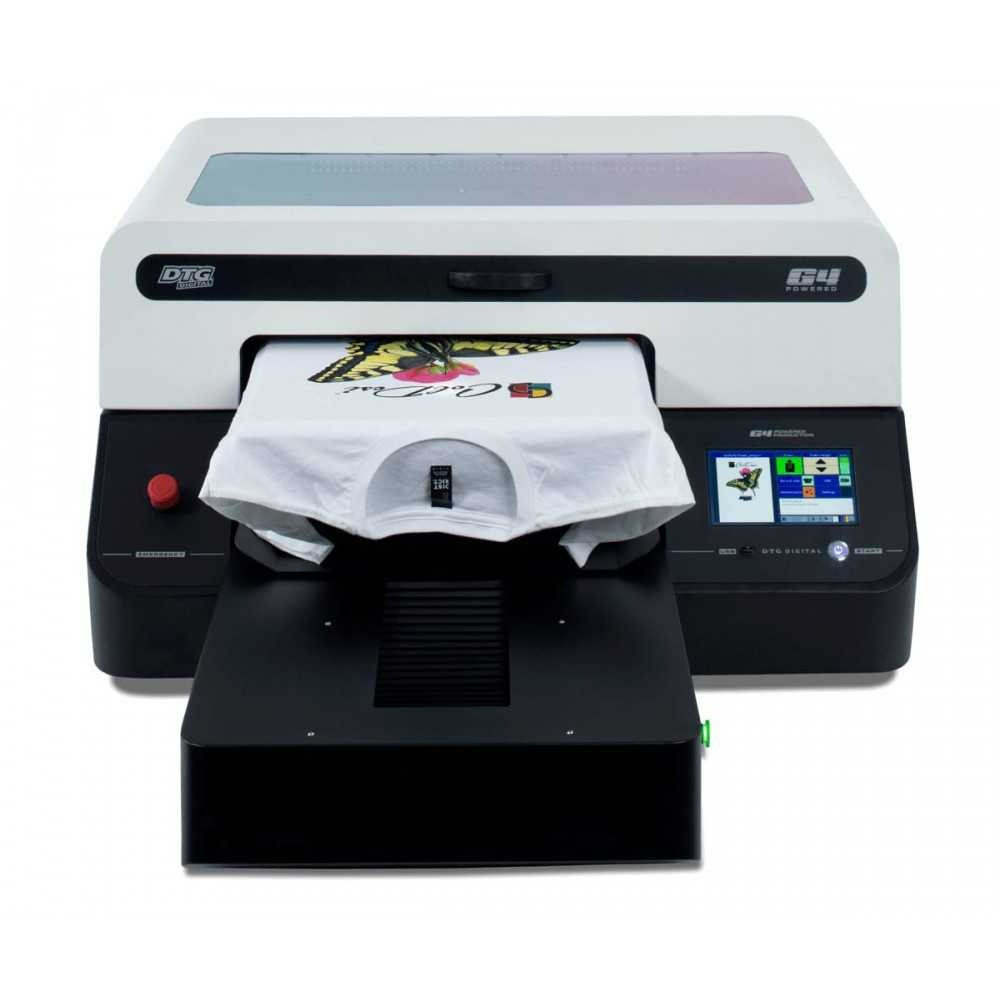Introduction to T-Shirt Printing
T-shirt printing is a creative and exciting process. It involves transferring your design onto a t-shirt. This can be for personal use, gifts, or business branding. To start, you need the right t-shirt printer. It’s essential to understand the basics of t-shirt printing. Knowing how to choose the right machine is crucial. Each printer type has its strengths and suits different printing needs.
With advancements in printing technology, the options are vast. You’ll find screen printing machines, direct to garment (DTG) printers, heat press machines, and sublimation printers. Each one offers unique features. They cater to different design specifications and volumes.
Good printing isn’t just about the machine. The fabric quality, inks, and printer calibration all play a part. You will need to maintain your equipment well. This ensures consistently high-quality outcomes. We will discuss how to choose the correct fabric and inks. Proper printer maintenance and regular calibration are also covered.
Beyond the basics, we’ll share a step-by-step guide. It takes you through the t-shirt printing process. From preparing the design to printing and curing the ink. You’ll gain practical knowledge of how to carry out each step effectively.
Even the best printers run into issues at times. Therefore, troubleshooting common problems is essential. We’ll provide tips to identify and solve these issues swiftly. Lastly, we’ll look ahead. We’ll discuss innovative techniques to advance your t-shirt printing craft. Plus, we’ll touch on what’s on the horizon for t-shirt printing technology.

Types of T-Shirt Printers and Their Features
Choosing the right t-shirt printer is all about matching the machine to your specific needs. There are four main types we’ll focus on: screen printing machines, DTG printers, heat press machines, and sublimation printers. Let’s dive into what each type offers and why they might be the best fit for your projects.
Screen Printing Machines
Screen printing machines are ideal for high volume orders. They use stencils and apply layers of ink onto the shirt. They are great for bold designs with fewer colors. These machines need more setup time. But, they produce long-lasting and vibrant results once running. Consider screen printing for large batches that don’t require a lot of detail.
Direct to Garment (DTG) Printers
DTG printers work like your home printer but on t-shirts. They spray ink directly onto the fabric. This results in detailed and complex designs. These printers are best for small batches and on-demand printing. They offer a wide color spectrum and high-resolution prints.
Heat Press Machines
Heat press machines transfer designs from heat-transfer paper onto the fabric. They use high temperature and pressure. These machines are a good choice for beginners. They’re also cost-effective for small orders and custom designs. Each print takes time, so it’s not ideal for very large orders.
Sublimation Printers
Sublimation printers offer a ‘dye’ print effect. The ink turns into gas with heat and bonds to the shirt. This type of printing gives vibrant and full-color results. It works best on polyester or polymer-coated substrates. Fabrics stay soft to the touch, as the ink is in the fabric, not on top. These printers are perfect for intricate, all-over patterns and prints.
Key Factors for High-Quality T-Shirt Printing
Achieving high-quality t-shirt printing is not just about the printer. It involves several key decisions. You need to choose the right fabric, ink, and maintain your printer. Understanding these factors can make a big difference. High-quality results and durability are what we aim for. Now, let’s break down these factors.
Choosing the Right Fabric
The choice of fabric will impact your final print. Cotton fabrics are popular for t-shirt printing. They absorb ink well which makes vibrant prints. For sublimation printers, choose polyester or polymer-coated materials. The ink fuses better with these fabrics. Always consider the print method before selecting your fabric.
Selecting Quality Inks and Toners
The quality of ink or toner is crucial. It affects print clarity and color vividness. Choose inks that are compatible with your t-shirt printer and fabric type. High-quality inks and toners resist fading and washout. This will ensure your designs stay sharp and colorful over time.
Printer Maintenance and Calibration
Regular maintenance is a must. It keeps your t-shirt printer running smoothly. Clean the printer heads to prevent clogs. Calibrate your printer for accurate color reproduction. This ensures consistency in every print. Regular checks can also help identify issues before they lead to bigger problems.

Step-by-Step Guide to T-Shirt Printing Process
A great t-shirt print starts with a step-by-step approach. Turn your visions into wearable art by following these stages.
Preparing the Design
First, create or choose a design. Use graphic software for custom images. Opt for high-resolution images for clarity. Check the design’s size; it should fit the t-shirt well. Pick colors carefully; they should work well together. Convert text to outlines to avoid font issues. Save the design in a format your t-shirt printer can read, like PNG or TIFF.
Setting Up the Printer
Next, set up your t-shirt printer. For screen printing, prepare screens and inks. For DTG, load the shirt and check ink levels. In heat press printing, ready the transfer paper and heat press. For sublimation, print the design on special paper. Always ensure the printer’s settings match your design’s requirements.
Printing and Curing the Ink
Now, print your design onto the t-shirt. In screen printing, apply ink through each screen layer. In DTG, let the printer spray the design directly. For heat press, apply heat and pressure to transfer the design. In sublimation, heat the ink on paper until it turns to gas. Once printed, cure the ink as needed. This may include drying or using a heat press again. This step sets the ink, making the design last longer.
Follow each step with care. This ensures your t-shirt printing results in a high-quality, durable product that stands out.
Troubleshooting Common T-Shirt Printing Problems
While a top-notch t-shirt printer is vital, it’s also essential to know how to handle common printing issues. Even experienced users can run into problems that affect the quality of the print. Knowing how to troubleshoot can save you time and keep your production on track.
One frequent issue is ink not adhering well to the fabric. This can stem from using the wrong type of ink for your fabric or a malfunctioning curing process. To resolve this, double-check that your inks are appropriate for the material. Ensure your curing method, whether it’s heat pressing or air drying, is up to spec.
Another concern might be the colors not appearing vivid or accurate. This usually indicates a calibration problem. Regularly calibrate your printer to maintain true colors. Also, verify that your printer’s profiles match the type of ink you’re using.
Clogged print heads can result in incomplete or blotchy prints. Perform routine cleaning to keep the ink flowing smoothly. Use manufacturer-recommended cleaning solutions to avoid damaging delicate printer parts.
Misaligned prints are often due to improper loading of the t-shirt or a shift during printing. Make sure the t-shirt is correctly aligned before starting. Secure it to avoid movement that can lead to misprinting.
Finally, if you notice issues with the durability and longevity of the prints, it could be related to the quality of the pre-treatment or underbase. High-quality pre-treatment ensures better ink absorption and longer-lasting prints.
Keep troubleshooting simple. Check for these common issues regularly and address them immediately. Quick fixes can prevent small issues from becoming major setbacks.

Advancing Your T-Shirt Printing with Innovative Techniques
To stay ahead in the t-shirt printing business, adopting innovative techniques is key. These advanced methods not only refine the quality of prints but can also increase efficiency and expand your product offerings. Embracing innovation in every part of the process, from design to the final product, can significantly improve your results. Let’s explore some of the innovative techniques that can take your t-shirt printing to the next level.
Explore New Printing Methods
Constantly seek out new printing technologies. Digital hybrid printing, for example, combines screen and digital printing. It offers speed and high-quality, detailed prints.
Experiment with Eco-friendly Inks
Eco-friendly inks are not just good for the environment. They can also provide a healthier workspace and often result in vibrant colors that appeal to environmentally conscious consumers.
Utilize Automation for Precision
Incorporate automated printing systems. They enhance precision, reduce human error, and speed up production. This is critical for large orders and intricate designs.
Implement 3D Printing Elements
3D printing can add tactile elements to t-shirts. This innovative technique is perfect for creating unique textures that make designs stand out.
Upgrade to Smart Textiles
Smart textiles offer interactive experiences. Embed sensors or lights in your shirts for dynamic designs that respond to sound or touch.
Advancing your t-shirt printing processes won’t just make your products stand out. It will also streamline your workflow and open up new markets for your business. Always keep an eye on the latest trends and technologies to remain competitive in the ever-evolving world of t-shirt printing.
Conclusion and Future of T-Shirt Printing Technology
As we wrap up this comprehensive guide, we understand that mastering t-shirt printers takes time. It comprises knowledge of different printer types and skills in selecting fabrics and inks. Regular maintenance and proper calibration are also crucial. High-quality t-shirt printing is an art that involves precision and troubleshooting expertise.
Looking ahead, the future of t-shirt printing is exciting and promising. Innovations are constantly emerging, shaping the way we print. Digital printing technologies continue to evolve, offering faster and more detailed results. The integration of sustainable practices and eco-friendly options is gaining traction. Consumers are becoming more environmentally conscious, and the industry is responding.
Smart textiles represent a new frontier with interactive capabilities. Imagine t-shirts that change color with temperature or respond to sound! Automation is streamlining the printing process, leading to greater precision and efficiency. These advancements will continue to transform t-shirt printing businesses.
As an expert in t-shirt printing, staying up-to-date with these changes is essential. It ensures that you can offer the latest and most impressive printing techniques to your customers. Keeping an eye on the horizon for the next big thing will put you ahead of the competition. The journey to perfect t-shirt prints never truly ends; it evolves with technology and creativity.
In conclusion, whether you’re starting or aiming to refine your skills, mastering the intricate art of t-shirt printing is rewarding. With innovation, dedication, and a sharp eye for detail, your prints will leave a lasting impression. The roadmap to success involves constant learning, adapting, and embracing the future of t-shirt printing technology.